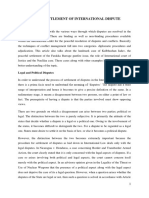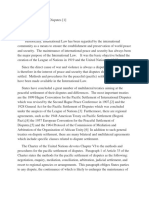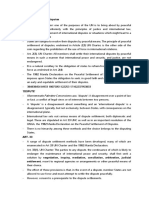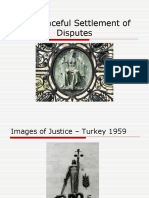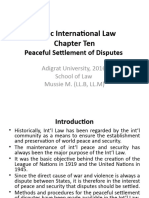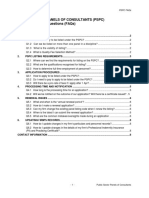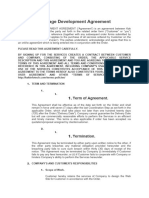0% found this document useful (0 votes)
11 views3 pagesDispute Resolving Methods
Negotiation is a primary method for resolving disputes through direct discussions, requiring goodwill and understanding, and is often a precursor to other methods. Good offices and mediation involve third-party assistance to facilitate negotiations, while inquiry and conciliation focus on clarifying facts and providing non-binding solutions, respectively. These methods are encouraged by international agreements and frameworks, although their practical application has varied over time.
Uploaded by
fatima.farooqrwpCopyright
© © All Rights Reserved
We take content rights seriously. If you suspect this is your content, claim it here.
Available Formats
Download as PDF, TXT or read online on Scribd
0% found this document useful (0 votes)
11 views3 pagesDispute Resolving Methods
Negotiation is a primary method for resolving disputes through direct discussions, requiring goodwill and understanding, and is often a precursor to other methods. Good offices and mediation involve third-party assistance to facilitate negotiations, while inquiry and conciliation focus on clarifying facts and providing non-binding solutions, respectively. These methods are encouraged by international agreements and frameworks, although their practical application has varied over time.
Uploaded by
fatima.farooqrwpCopyright
© © All Rights Reserved
We take content rights seriously. If you suspect this is your content, claim it here.
Available Formats
Download as PDF, TXT or read online on Scribd
/ 3


















